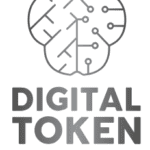What is the Internet of Behaviors (IoB)? The Internet of Behaviors (IoB) is an extension of the Internet of Things (IoT), the network of devices that can collect, communicate and exchange data. The IoB goes beyond the IoT by using the data to understand and influence human behavior.
IoB is based on three fields of study:
- Technology: The devices and platforms that enable the collection and transmission of data, such as smartphones, wearables, sensors, cameras, etc.
- Data analytics: The methods and tools that process and analyze the data, such as machine learning, artificial intelligence, cloud computing, etc.
- Behavioral science: The theories and principles that explain and predict human behavior, such as psychology, sociology, economics, etc.
The IoB uses the data from the IoT to create behavioral profiles of individuals and groups, and then applies behavioral science to design interventions that can change or reinforce their behavior.
For example, a health insurance company can use the IoB to monitor the physical activity, diet and sleep patterns of its customers, and then offer personalized incentives, feedback and recommendations to improve their health and wellness.
Another example is a retailer that can use the IoB to track the online and offline shopping behavior of its customers, and then deliver targeted ads, offers and suggestions to increase their loyalty and sales.
What are the trends and benefits of the IoB?
The IoB is a growing phenomenon that is expected to have a significant impact on various domains and industries. According to Gartner, by 2023, the individual activities of 40% of the global population will be tracked digitally in order to influence their behavior.
Some of the trends and benefits of the IoB are:
- Enhanced customer experience: IoB enables businesses to understand customers better, offering personalized and satisfying products/services.
- Improved marketing and sales: IoB optimizes marketing strategies, increasing conversion rates, retention, and revenues.
- Increased efficiency and productivity: IoB enhances internal processes, improving business performance and outcomes.
- Greater social good: IoB aids governments and non-profits in addressing social and environmental issues, promoting positive behavior change.
What are the challenges and risks of the IoB?
The IoB also poses some challenges and risks that need to be considered and addressed. Some of them are:
- Ethical and legal issues: IoB raises concerns about privacy, security, consent, and accountability.
- Data quality and reliability: IoB’s effectiveness relies on accurate, timely, and consistent data.
- Behavioral complexity and variability: IoB’s assumptions from behavioral science may be biased or inaccurate, varying by context and culture.
- Unintended consequences and side effects: IoB may lead to dependency, addiction, manipulation, coercion, and discrimination.
Conclusion
The Internet of Behaviors (IoB): It merges technology, data analytics, and behavioral science to analyze human behavior. Potential benefits: IoB offers advantages for businesses and society. Challenges and risks: IoB presents potential risks requiring careful management and regulation. Evolving phenomenon: IoB is new and requires further research, development, and ethical/legal frameworks. Responsible use: Ensuring IoB’s responsible and beneficial application is essential.


